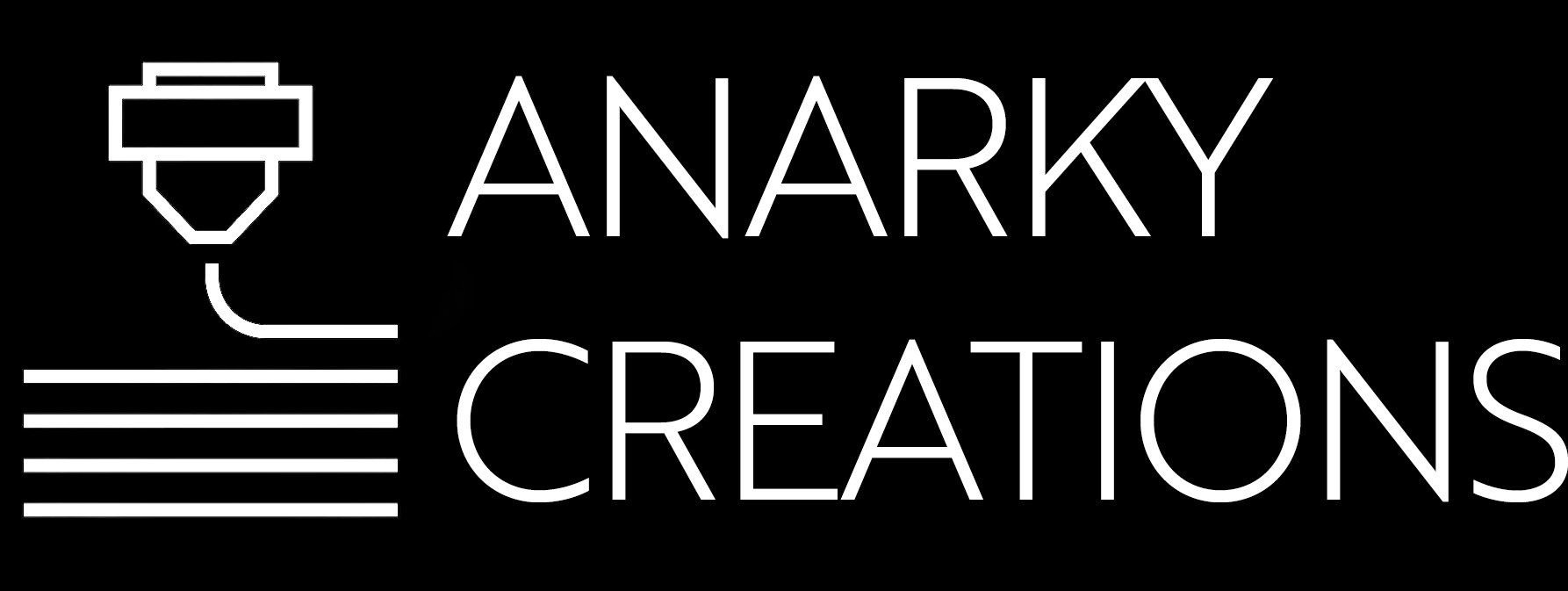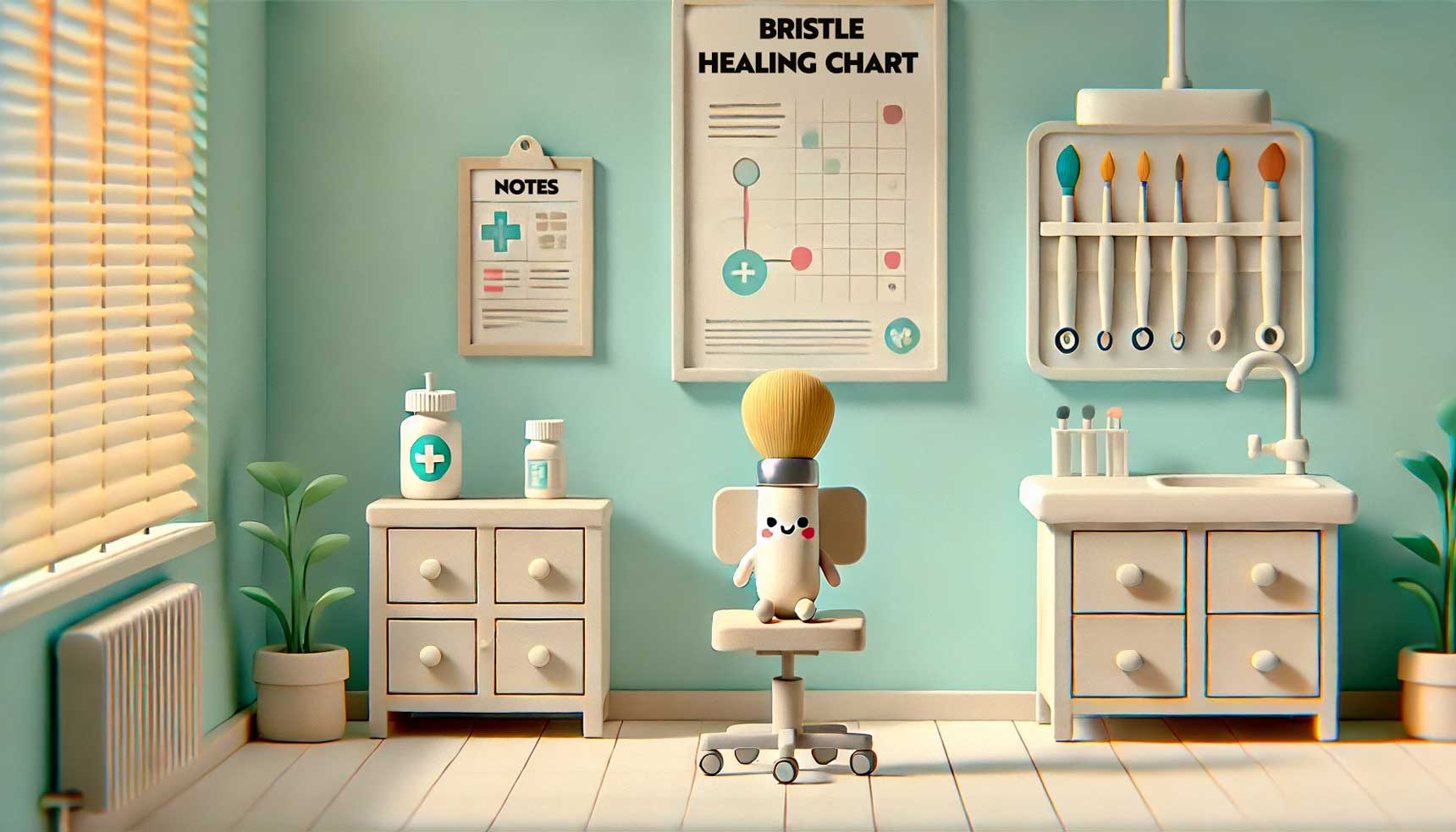Breaking It Down
A miniature painting brush isn’t just a stick with fibres on the end, each part affects how it performs and how long it lasts:
- Bristles: Either natural materials like sable or synthetic fibres like nylon or Taklon.
- Tip: Point that touches your miniature, shape retention is critical.
- Belly: Widest bristle section to hold liquid – a good belly means fewer trips to the palette.
- Ferrule: Band that grips the bristles and connects them to the handle.
- Crimp: Pinched section of the ferrule. **
- Handle: Shape, weight, and length vary – a very personal choice.
** Crimping – A technique used by nail artists to pinch (minimal pressure) the ferrule, converting a round brush head to a much flatter oval one while retaining the belly. Crimping is absolutely NOT recommended for expensive high quality brushes, but if you have purchased an inexpensive multipack, or have a ruined brush that is about to be disposed of anyway, then do go ahead and experiment. Investigating techniques used by other industries is interesting, in this instance the idea is to tailor a round brush to the application (a nail) while retaining liquid capacity. There could be miniature painting applications that warrant experimentation with a cheap disposable brush. We haven’t tried it yet, let us know if you have. Loads of info online.
Brush Shapes and What They’re Good For
Round: The all rounder, with shorter controllable bristles tapering to a fine point. Although it is better to build a collection of different brushes, the round brush can be used for almost everything. If you can only own two brushes, it should two round ones – one larger, one smaller. Round brushes work well with thinned out paint.
Flat Drybrush: The traditional workhorse for texture and weathering, larger flattened bristle patterns make these ideal for covering larger areas such as terrain. A popular choice for beginners who often purchase makeup brushes for this purpose. Even after graduating to domed bristles, an inexpensive flat drybrush is still a go-to for large areas of terrain. Preserving the life of expensive domed brushes for finer work.
Domed Drybrush: The next level workhorses for texture and weathering, compact domed bundles of bristles make them ideal for executing drybrushing techniques. Contrary to popular belief drybrush bristles are not also usually stiff, although their dense bundle shape can give that appearance. Bristle flex is crucial for paint delivery. Domed tipped bundles are especially suited to stippling, natural effects and leave no directional lines.
Detail/Spotter: Small brush sizes with ultra fine tips, designed for tiny details like eyes and glints.
Liner: Thin with long bristles these do what they say, form lines. Liner brushes still do have a belly, its just a little smaller.
Brush Sizes Explained (And Why It’s Confusing)
There is no universal system for brush sizes. A size one from Winsor & Newton may be much smaller (or larger) than a size one from The Army Painter. This is why many experienced painters recommend choosing a brush by point quality and belly capacity, not just the number on the side. Counterintuitively, larger high end brushes occasionally perform better for detail work. Why? Because a well-shaped size one with a strong point offers more paint control and fewer reloads than a scratchy double zero. If you’re brand new then size one is the universal starting point for miniatures. The greater the numeral, the larger the brush – with size two being pretty good for wings and size three for large expanses of terrain. If you start consulting YouTube for information then one brush consistently referred as good, is the Windsor Newton Series 7 Size 1. This isn’t an affiliate link but the starting point for many.
Bristles – Natural V Synthetic
Two very different propositions, each with merits, the most common pathway is to begin with synthetic and graduate to natural. Not only for when some techniques have been mastered – decisions on more costly natural bristle brushes are easier to make with the benefit of some painting experience. For example, belly size differs per brand and material for example. Whilst synthetic brush tips curl quickly and have a far shorter lifespan, they are more reliably consistent than a natural bristle. It’s not impossible for two ‘identical’ sable brushes to feel completely different. Professional miniature artists often don’t rely on one single new size zero, but order multiple copies to select the ‘best’ one. It is worth checking reviews for commentary on consistency before committing. If looking towards vegan and cruelty-free options then not all synthetic brushes are guaranteed to meet that brief, it’s definitely worth digging into brand datasheets for hidden nasties. Coatings, plastics and so on.
Generally speaking natural bristles do a far superior job in flexing and holding their shape, they also do not curl as readily and have far greater longevity. Most artists prefer their ‘feel’, there is no tangible way of explaining it but a natural brush just feels better. More highly tuned, more fluid – easier to achieve a better finish. Common materials include Kolinsky Sable, Red Sable, Squirrel, Ox and Goat. Each with variations in springyness and point retention. Advances in made-made materials are closing the gap, as are hybrid brushes, aiming to balance cost, performance and ethical concerns.
Caring for Your Brushes
Even a top-tier brush will expire quickly if not properly cared for, here’s how:
- Rinse often: Don’t let paint enter or dry in the ferrule.
- Use brush soap/cleaner: Especially after long sessions, a popular choice is Masters.
- Shape the tip: After cleaning, reshape the bristles with your fingers.
- Oils: Excessive testing on hands can transfer unwanted oils to the brush.
- Dry horizontally or with the tip facing down: Water trapped in the ferrule is damaging.
Starter Brush Kit
If you’re starting out begin with synthetic bristles and grab:
- x1 round size 1
- x1 detail size 0 or 00
- x1 flat drybrush (small or medium)
In terms of materials, begin with synthetic since these are more economical and work better for learning the ropes. If you’re upgrading experiment with a different shapes/size or invest in one high-end natural bristle to see how it changes your painting. If there’s a plan to use metallics then at least one inexpensive synthetic is the way to go, this is because metallics can be brutal for natural bristles. It should be noted too that old brushes still have value, use them for priming, base coats and washes – save your better brushes for finer work.
Over to You
What’s your favourite brush brand? Got a weird size you swear by?
Let us know in the comments – we love a good brush debate.

